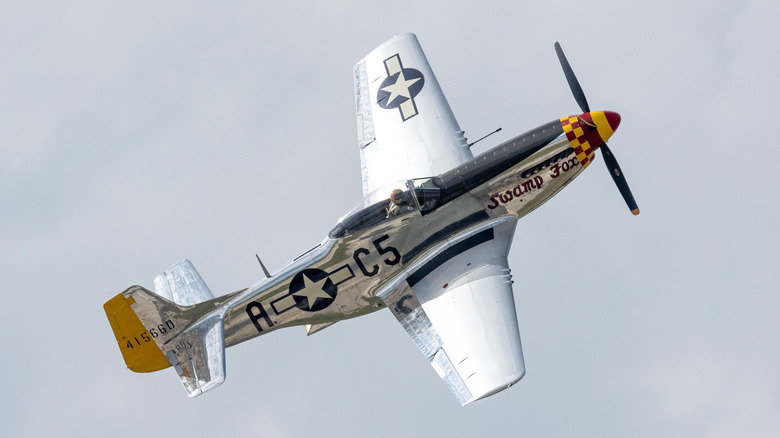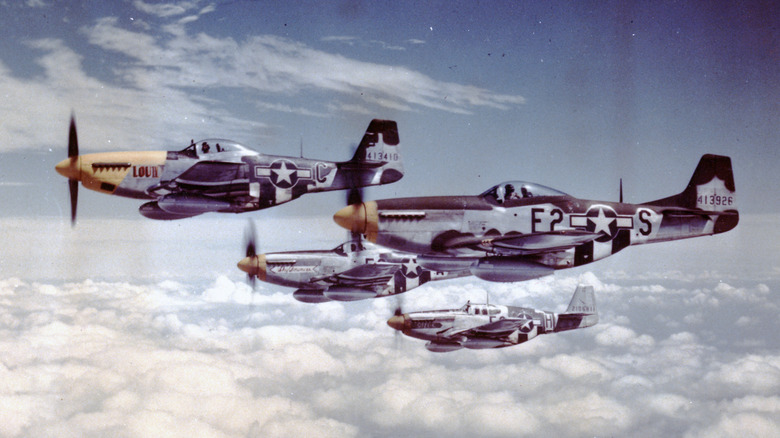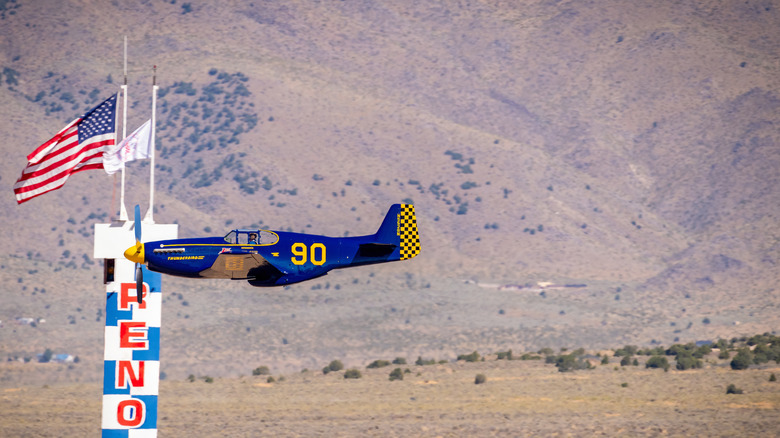P-51 Mustang Top Speed: How Fast Could The Fighter Plane Go & How Much HP Did It Have?
The North American P-51 Mustang wasn't just one of the most important Allied fighter planes of World War II. The Mustang ranks highly on the list of the most famous warplanes of all time. While there are plenty of reasons for the Mustang's long and successful combat run, speed was always one of its big advantages over its rivals in the sky.
So, exactly how powerful was the Mustang, and how fast could it fly? Though the Mustang would evolve a lot during its first few years of service, getting a new engine among other updates, the iconic and widely used bubble canopy P-51D variant made 1,490 horsepower and had a top speed of 437 miles per hour — easily putting it among the fastest fighter planes of World War II. However, some P-51s would go even faster in the years following the war, including lightweight versions and highly-modified examples built for winning air races and setting speed records.
The switch to a Merlin engine gave the Mustang a serious boost
Early variants of the P-51 used the 1,200-horsepower Allison V-1710 V12 piston engine. Though it was a strong performer at lower altitudes, the Allison engine struggled at higher ones. That issue was fixed when the P-51 switched to the legendary Rolls-Royce Merlin V12 engine.
Also used by other planes like the British Spitfire, the Merlin took the P-51's performance to a new level. In short bursts, the P-51D could go beyond its standard power rating, making 1,720 horsepower in its "War Emergency Power" setting. In the later years, North American Aviation built an even faster, lightweight variant of the Mustang called the P-51H that had a top speed of 487 miles per hour. However, World War II ended before the P-51H reached the front lines.
Even after World War II was over, though, the P-51's power and speed helped the plane retain its status as a viable fighter amidst the transition to jet-powered aircraft. At one point during the Korean War, a Mustang, which by then had been designated the "F-51," even shot down a North Korean MiG-15 jet fighter. The Mustang continued to be used by the U.S. Air Force until 1957, and it served even longer internationally.
The P-51 had had another life as an air racer
In the years after the war ended, surplus P-51s became popular among air racers thanks to their powerful engines and strong airframes. Some have even joked and speculated that the Mustang was actually designed as an air racer first and a fighter plane second. The Merlin-powered Mustangs were capable racers in "stock" form, but the supercharged engine also had serious potential for modification.
The P-51 played a key role in the growth of air racing in the immediate post-war years, and that presence has continued into the modern era. One heavily modified P-51 known as Voodoo currently holds the piston-engine aircraft speed record of 531 miles per hour, with its Merlin V12 outputting 3,100 horsepower, or more than double what a P-51D made when it left the factory. Decades after World War II, the legend of the P-51 shows no signs of fading. Both its long-running air racing success and the fact that there are still a relatively high number of restored P-51s flying today ensure that the powerful Mustang will continue to leave its mark on generations to come.


